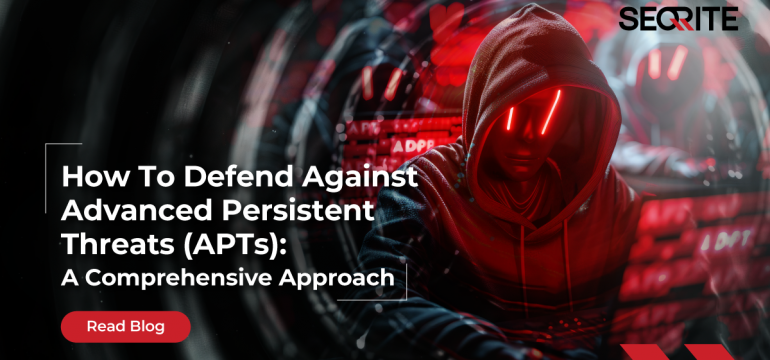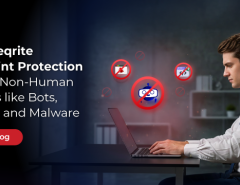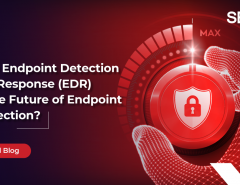In today’s time, one of the most formidable threats organizations face today is the Advanced Persistent Threat (APT). These sophisticated, targeted attacks are designed to infiltrate networks, steal sensitive data, and wreak havoc on critical infrastructure – all while evading detection for extended periods. As the digital landscape becomes increasingly interconnected, the need for a comprehensive understanding of what is an APT attacks and the strategies to combat them has never been more crucial.
What is an Advanced Persistent Threat?
APT is a persistent, targeted, and highly sophisticated attack campaign orchestrated by skilled cybercriminals or state-sponsored actors. Unlike opportunistic, indiscriminate cyber threats, APTs are meticulously planned and executed, with the goal of infiltrating a specific organization or network to achieve a specific objective, such as intellectual property theft, data manipulation, or infrastructure sabotage.
The hallmarks of an APT attack include:
- Persistence: APT groups maintain a stealthy, long-term presence within a targeted network, often for months or even years, to maximize the damage and extraction of valuable data.
- Targeted Approach: APT attacks are tailored to a specific organization or individual, leveraging in-depth reconnaissance and social engineering techniques to identify and exploit vulnerabilities.
- Sophistication: APT groups employ a diverse arsenal of advanced tools, techniques, and procedures (TTPs) to bypass security measures and maintain a persistent foothold within the target’s network.
- Stealthiness: APT actors utilize evasive tactics, such as the use of custom malware, to avoid detection and maintain their presence unnoticed for extended periods.
Stages and Tactics of an APT Attack
Successful APT attacks typically unfold in three distinct stages:
- Infiltration: The initial phase involves breaching the target’s defenses, often through social engineering tactics like spear phishing or exploiting vulnerabilities in web applications or network resources.
- Expansion: Once a foothold is established, APT actors work to expand their presence within the network, compromising additional systems and user accounts to gain access to sensitive data and critical infrastructure.
- Extraction: The final stage involves the exfiltration of the stolen data, which may be accomplished through various means, such as the use of “white noise” tactics like DDoS attacks to distract security teams.
Throughout these stages, APT groups leverage a wide range of sophisticated techniques, including:
- Malware Deployment: Customized malware, such as backdoors and Trojans, are used to establish a persistent presence and maintain remote access to the target’s network.
- Command and Control (C2) Infrastructure: APT actors create complex, often global, command and control networks to orchestrate their attacks and exfiltrate data.
- Social Engineering: Targeted phishing campaigns, watering hole attacks, and supply chain compromises are employed to gain initial access and elevate privileges within the target organization.
- Lateral Movement: APT groups skillfully navigate the target’s network, compromising additional systems and accounts to expand their reach and access sensitive data.
Defending Against APTs: A Multilayered Approach
Safeguarding your organization against the relentless onslaught of APT attacks requires a comprehensive, multilayered security strategy that addresses both technical and human-centric aspects of cybersecurity. By implementing a holistic approach, you can significantly enhance your organization’s resilience and minimize the risk of successful APT intrusions.
Network Security Measures
- Traffic Monitoring and Analysis: Closely monitoring both incoming and outgoing network traffic can help detect the telltale signs of an APT attack, such as the installation of backdoors or attempts to exfiltrate data.
- Web Application Firewall (WAF): A WAF deployed at the network’s edge can help mitigate common application-layer attacks, such as SQL injection and remote file inclusion, which are often used by APT groups to establish an initial foothold.
- Internal Traffic Monitoring: Implementing network firewalls and other internal traffic monitoring tools can provide visibility into user behavior and help identify anomalies that may indicate the presence of an APT actor within the network.
- Application and Domain Whitelisting: Restricting access to approved applications and domains can significantly reduce the attack surface and limit the avenues available to APT groups for infiltration and lateral movement.
Access Control and User Awareness
- Privileged Access Management: Implementing robust access controls, including the principle of least privilege and two-factor authentication, can help prevent compromised user accounts from being exploited by APT actors.
- Employee Security Awareness Training: Educating your workforce on the latest APT tactics, such as spear phishing and social engineering, can empower them to identify and report suspicious activities, reducing the risk of successful infiltration.
- Incident Response and Threat Hunting: Developing a comprehensive incident response plan and actively hunting for indicators of APT activity can help organizations quickly detect, contain, and mitigate the impact of a successful attack.
Vulnerability Management and Threat Intelligence
- Timely Patching and Software Updates: Ensuring that all network software and operating systems are kept up to date with the latest security patches can help close the vulnerabilities that APT groups often exploit to gain initial access.
- Threat Intelligence Integration: Incorporating threat intelligence feeds into your security operations can provide valuable insights into the tactics, techniques, and procedures (TTPs) used by known APT groups, allowing you to proactively adapt your defenses.
- Encryption and Data Protection: Implementing robust encryption measures for both data at rest and in transit can significantly impede the ability of APT actors to access and exfiltrate sensitive information.
Incident Response and Resilience
- Comprehensive Incident Response Planning: Developing and regularly testing a comprehensive incident response plan can help your organization quickly detect, contain, and recover from a successful APT attack, minimizing the overall impact.
- Backup and Disaster Recovery: Maintaining robust backup and disaster recovery strategies can ensure that your organization can quickly restore critical systems and data in the event of an APT-driven data breach or infrastructure sabotage.
- Cyber Resilience Testing: Regularly conducting simulated APT attacks and red team exercises can help identify vulnerabilities, test the effectiveness of your security controls, and refine your incident response capabilities.
Leveraging Technology Solutions for APT Defense
To effectively combat the persistent and sophisticated threat of APTs, organizations can leverage a range of specialized security solutions that address the unique challenges posed by these advanced cyber adversaries.
Web Application Firewall (WAF)
A robust WAF solution, such as Seqrite Endpoint Protection that comes with a firewall, can play a crucial role in protecting your web applications and servers from the initial infiltration attempts commonly used by APT groups. By monitoring incoming web traffic and blocking hacking attempts at the network’s edge, a WAF can help mitigate application-layer attacks like SQL injection and remote file inclusion, which are often the first step in an APT campaign.
Backdoor Protection
Seqrite Endpoint Protection WAF also includes a specialized feature for detecting and preventing the installation of backdoor shells – a common tactic employed by APT actors to maintain persistent access to a compromised network. By inspecting traffic to web servers and intercepting attempts to interact with these hidden access points, this solution can help expose and eliminate the presence of backdoors, a critical component of an APT’s foothold within the target environment.
Two-Factor Authentication (2FA)
Implementing a flexible 2FA solution, such as the one offered by Seqrite Endpoint Protection, can significantly enhance access control and prevent unauthorized actors from leveraging compromised user credentials to move laterally within the network. By requiring a secondary form of verification, 2FA can effectively block APT groups from exploiting privileged accounts to access sensitive data and critical systems.
DDoS Protection
APT actors often employ “white noise” tactics, such as distributed denial-of-service (DDoS) attacks, to distract security teams and weaken network defenses, facilitating the exfiltration of stolen data. Seqrite ZTNA can help mitigate both application and network-layer attacks, ensuring that your organization’s critical resources remain available and resilient in the face of these disruptive tactics.
Conclusion: Embracing a Proactive Cybersecurity Posture
To effectively safeguard your organization against the relentless onslaught of APT attacks, a comprehensive, multilayered security strategy is essential. By implementing a blend of network security measures, access control protocols, vulnerability management practices, and incident response capabilities, you can significantly enhance your organization’s resilience and minimize the risk of successful APT intrusions.




